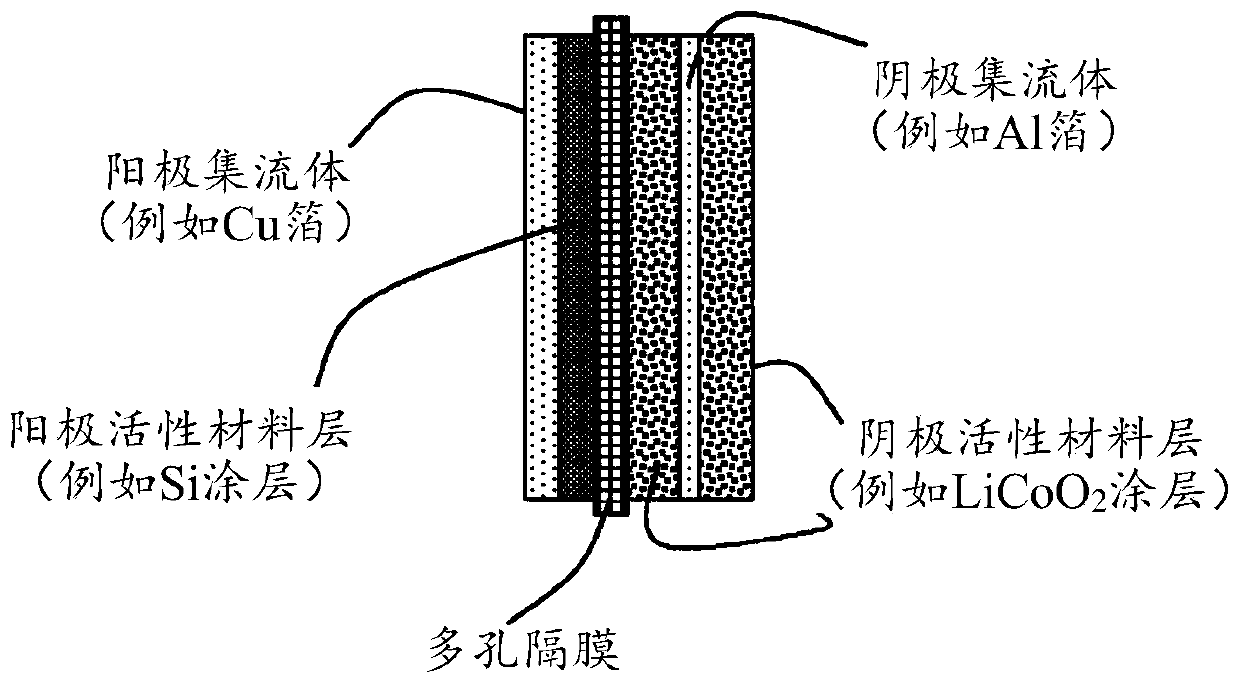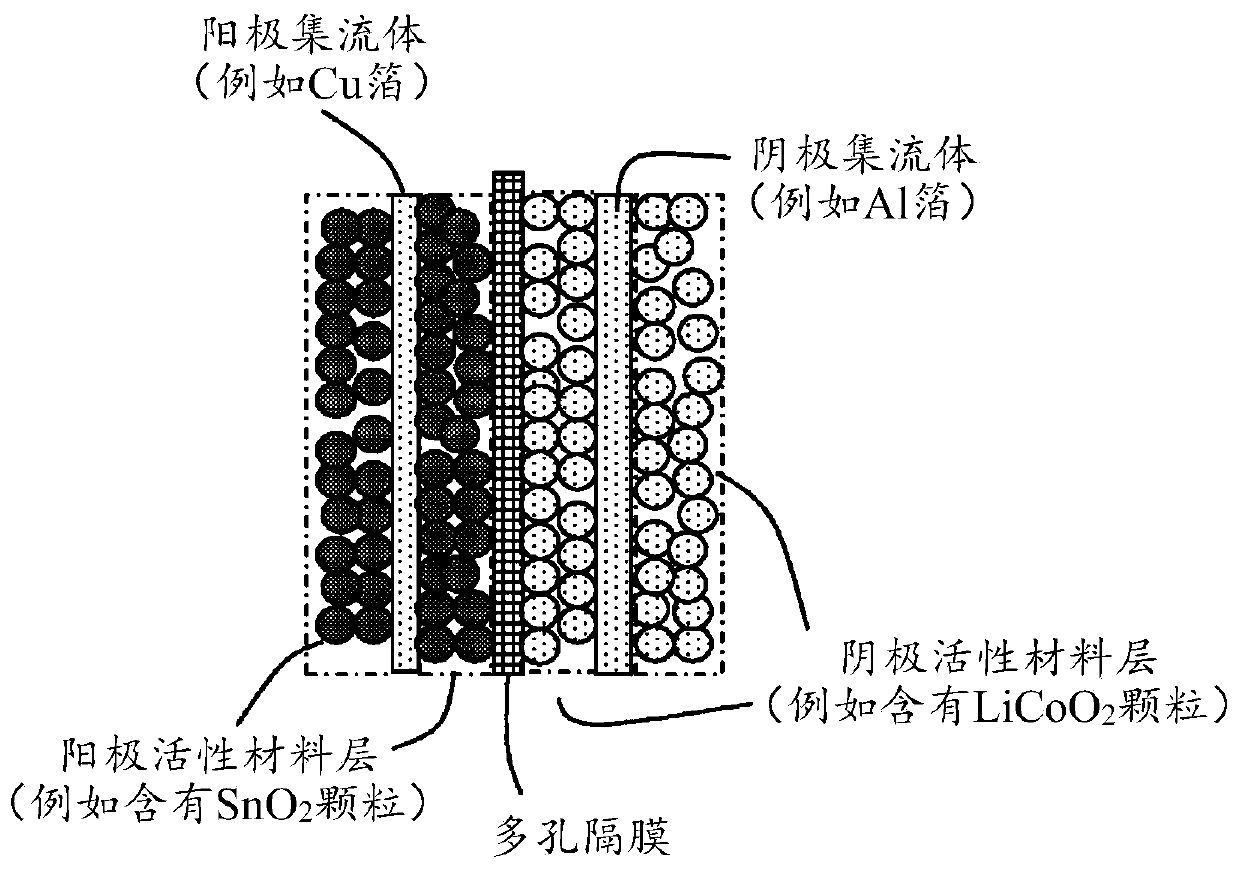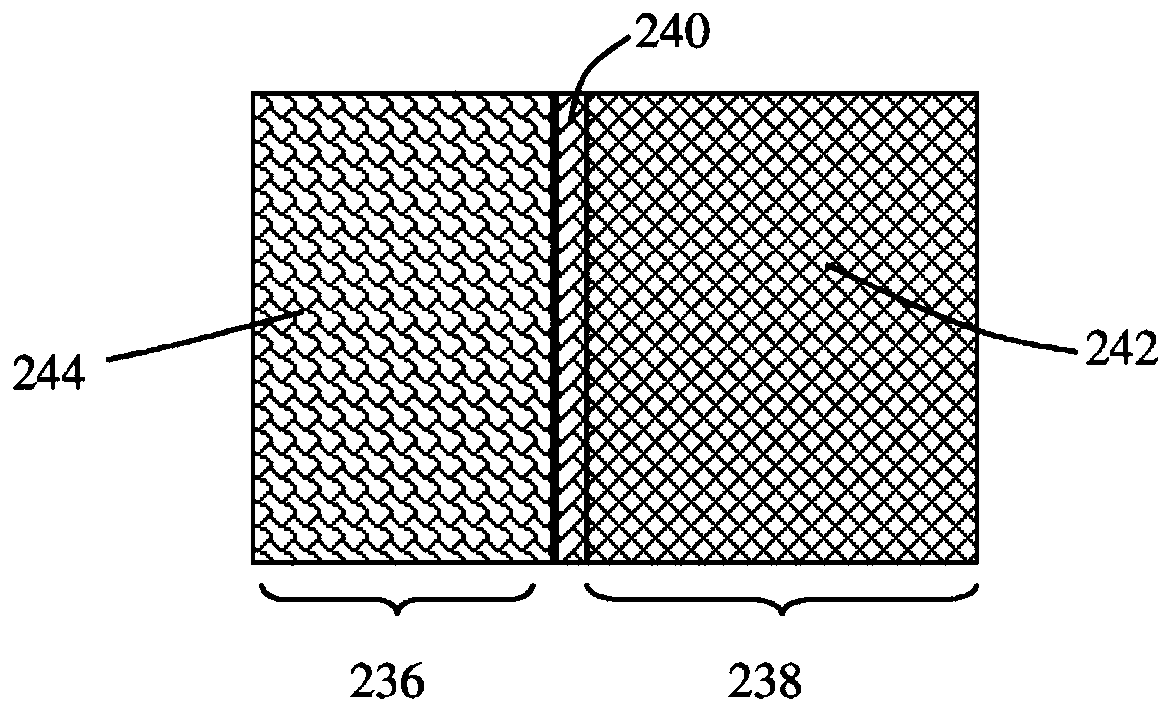Shape-conformable alkali metal battery having a conductive and deformable quasi-solid polymer electrode
An alkali metal, quasi-solid technology, used in battery electrodes, active material electrodes, non-aqueous electrolyte batteries, etc., can solve problems such as low diffusion coefficient, inability to effectively and efficiently transport electrons and heat, and long recharge time.
- Summary
- Abstract
- Description
- Claims
- Application Information
AI Technical Summary
Problems solved by technology
Method used
Image
Examples
example 1
[0154] Example 1: Preparation of Graphene Oxide (GO) and Reduced Graphene Oxide (RGO) Nanosheets from Natural Graphite Powder
[0155] Natural graphite from Huadong Graphite Co. (Qingdao, China) was used as starting material. GO was obtained by following the well-known modified Hummers method involving two oxidation stages. In a typical procedure, the first oxidation is achieved under the following conditions: 1100 mg of graphite is placed in a 1000 mL long-necked flask. Then, add 20 g of K in the flask 2 S 2 o 8 , 20g of P 2 o 5 and 400 mL of concentrated H 2 SO 4 Aqueous solution (96%). The mixture was heated at reflux for 6 hours and then left undisturbed at room temperature for 20 hours. Graphite oxide was filtered and rinsed with copious amounts of distilled water until neutral pH. A wet cake material is recovered at the end of this first oxidation.
[0156] For the second oxidation process, place the previously collected wet cake in a solution containing 69 mL...
example 2
[0160] Example 2: Preparation of pristine graphene sheets (essentially 0% oxygen)
[0161] Recognizing the possibility that the high number of defects in GO sheets act to reduce the conductivity of individual graphene planes, we decided to investigate whether using pristine graphene sheets (non-oxidized and oxygen-free, non-halogenated and halogen-free, etc.) and thermally conductive conductive additives. Pre-lithiated native graphene has also been used as an anode active material. Native graphene sheets are produced using direct sonication or liquid-phase production processes.
[0162] In a typical procedure, 5 grams of graphite flakes ground to a size of approximately 20 μm or less were dispersed in 1,000 mL of deionized water (containing 0.1% by weight of FSO) to obtain a suspension. An ultrasonic energy level of 85 W (Branson S450 ultrasonic generator) was used for the expansion, separation and size reduction of the graphene sheets for a period of 15 minutes to 2 hours...
example 3
[0164] Example 3: Preparation of pre-lithiated graphene fluoride sheets as anode active materials for lithium-ion batteries
[0165] We have used several methods to produce GF, but only one method is described here as an example. In a typical procedure, highly expanded graphite (HEG) is prepared from an intercalation compound С 2 F·xClF 3 preparation. HEG is further fluorinated by chlorine trifluoride vapor to produce fluorinated highly expanded graphite (FHEG). A pre-cooled Teflon reactor was filled with 20-30 mL of liquid pre-cooled ClF 3 , the reactor was closed and cooled to liquid nitrogen temperature. Then, no more than 1 g of HEG was placed in a container with 3 The gas enters the reactor and is located in the pores within the reactor. Formed within 7-10 days with approximate formula C 2 Gray beige product of F.
[0166] Subsequently, a small amount of FHEG (approximately 0.5 mg) was mixed with 20-30 mL of organic solvents (methanol and ethanol, respectively) an...
PUM
| Property | Measurement | Unit |
|---|---|---|
| electrical conductivity | aaaaa | aaaaa |
| thickness | aaaaa | aaaaa |
| electrical conductivity | aaaaa | aaaaa |
Abstract
Description
Claims
Application Information
 Login to View More
Login to View More - R&D
- Intellectual Property
- Life Sciences
- Materials
- Tech Scout
- Unparalleled Data Quality
- Higher Quality Content
- 60% Fewer Hallucinations
Browse by: Latest US Patents, China's latest patents, Technical Efficacy Thesaurus, Application Domain, Technology Topic, Popular Technical Reports.
© 2025 PatSnap. All rights reserved.Legal|Privacy policy|Modern Slavery Act Transparency Statement|Sitemap|About US| Contact US: help@patsnap.com



